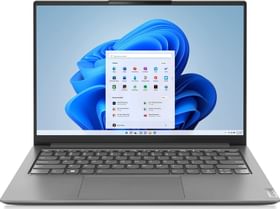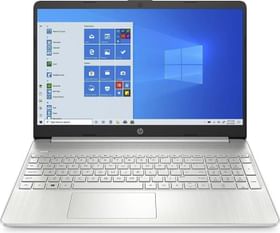Every year, tech enthusiasts eagerly anticipate the showdown between Apple’s latest silicon and Qualcomm’s cutting-edge System on Chip, in a quest to determine which packs more computational prowess. The time has come once again, as Apple recently unveiled its iPhone 15 Pro series, featuring the new and improved A17 Pro, the crown jewel of Apple’s lineup of mobile processors. This year’s chipset is a significant achievement, as it marks Apple’s inaugural foray into the realm of TSMC’s 3nm node technology, promising an array of technological advancements.
However, the burning question remains: How does the A17 Pro measure up against Qualcomm’s Snapdragon 8 Gen 2 processor? In this comprehensive comparison, we will delve into the differences and similarities between the Apple A17 Pro and Qualcomm Snapdragon 8 Gen 2.
Apple A17 Pro and Qualcomm Snapdragon 8 Gen 2 processors Specs Comparison
Here’s a comparative table highlighting the key specifications of the Apple A17 Pro and Qualcomm Snapdragon 8 Gen 2 processors:
| Specs | Apple A17 Pro | Snapdragon 8 Gen 2 |
|---|---|---|
| CPU | Six-core CPU, 19 billion transistors | Octa-core Kryo CPU |
| CPU Cores | 2x High-performance cores, 4x High-efficiency cores | 1x 3.2GHz (Cortex-X3), 2x 2.8GHz (Cortex-A715), 2x 2.8GHz (Cortex-A710), 3x 2.0GHz (Cortex-A510) |
| Process Technology | TSMC’s 3nm process | TSMC’s 4nm process |
| GPU | Apple Pro-class 6-core GPU, Hardware-accelerated Ray Tracing | Adreno 740 GPU, Hardware-accelerated Ray Tracing |
| Memory Support | LPDDR5 | LPDDR5X |
| Machine Learning and AI | 16-core Neural Engine; 35 TOPS | New AI Engine, Hexagon Processor |
| ISP | Apple-designed Image Signal Processor | Triple 18-Bit Spectra ISP; Cognitive ISP, Snapdragon Sight |
| Camera Capability | ProRAW photos at 48MP, Photonic Engine | Capture photos up to 200MP, 36MP triple shots with ZSL |
| Video Capability | 4K60 ProRes videos, Spatial video recording, 4K HDR Dolby Vision @ 60FPS, Cinematic 4K@24FPS, Action mode | 8K HDR, Bokeh Engine 2 |
| Modem | Snapdragon X70 5G modem, Up to 10 Gbps Peak Download, Up to 3.5 Gbps Peak Upload | Snapdragon X70 5G modem, Up to 10 Gbps Peak Download, Up to 3.5 Gbps Peak Upload |
| WiFi Support | Wi-Fi 6E | Wi-Fi 7 |
| Bluetooth | Bluetooth 5.3 | Bluetooth 5.3, LE Audio, Dual Bluetooth Antenna, aptX Lossless |
| Others | AV1 Decoder, ProRes codec, Pro display engine, NavIC Support | AV1 Codec Support, NavIC Support |
Apple 17 Pro vs. Snapdragon 8 Gen 2: CPU

Let’s kick off our comparison by examining the CPU architecture. Apple has retained its six-core CPU setup for the A17 Pro, but what sets it apart is its groundbreaking use of TSMC’s 3nm manufacturing process. This results in a remarkable 19 billion transistors packed onto a single die. The CPU includes two high-performance cores, clocked at an impressive 3.70 GHz, delivering a 10% boost in performance compared to the previous Everest cores. Additionally, Apple has integrated four power-efficient CPU cores, known for their outstanding efficiency, offering 3 times the performance per watt compared to the competition.
On the other hand, Qualcomm’s Snapdragon 8 Gen 2, released a year ago, utilizes TSMC’s 4nm node. It features an octa-core CPU design, comprising a single powerful Cortex-X3 core clocked at 3.2GHz, 2 Cortex-A715 cores clocked at 2.8GHz, 2 Cortex-A710 cores also at 2.8GHz, and 3 Cortex-A510 cores at 2.0GHz.

Comparing clock speeds, it’s evident that the A17 Pro’s prime core outpaces the Snapdragon 8 Gen 2, making it a formidable contender in single-threaded tasks. Even considering the rumored CPU details of the upcoming Snapdragon 8 Gen 3, Qualcomm still falls short with a prime core clocked at 3.39GHz, lagging behind the A17 Pro’s 3.70GHz.
For a more tangible comparison, let’s examine the Geekbench 6 scores of all three chips. Keep in mind that the leaked scores of Snapdragon 8 Gen 3 should be taken with a pinch of salt as optimization efforts are ongoing.
Apple A17 Pro vs. Snapdragon 8 Gen 2: GPU
Shifting our focus to GPU performance, we encounter some exciting developments. Last year, Qualcomm’s Adreno 740 outperformed Apple’s 5-core GPU in both performance and efficiency. This year, Apple has made a concerted effort to regain its GPU crown from Qualcomm. The A17 Pro features a new Pro-class GPU on shader architecture with six cores, a notable upgrade from the previous five cores. This results in a 20% boost in performance over its predecessor.
Notably, Apple has also introduced hardware-accelerated Ray tracing support with the Pro-class GPU on the A17 Pro. This technology delivers graphics rendering speeds four times faster than software-based methods found in the A16 Bionic. Moreover, MetalFX Upscaling, a new feature leveraging both the GPU and Neural Engine, enhances graphics quality while conserving power.
These advancements position the A17 Pro as a compelling choice for gamers, promising the ability to play console-quality games with exceptional graphics.
In comparison, the older Adreno 740 GPU on the Snapdragon 8 Gen 2 has been impressive and supports features like HW-accelerated ray tracing. However, Apple’s new 6-core GPU appears to take the lead.
While the upcoming Adreno 750 GPU on the Snapdragon 8 Gen 3 remains untested, Apple’s A17 Pro currently stands as a frontrunner in the GPU race.

Apple A17 Pro vs. Snapdragon 8 Gen 2: ISP
Although Apple did not delve into the ISP (Image Signal Processor) details of the A17 Pro during its unveiling, it is essential to note that the Photonic engine powers various camera capabilities, including Night mode and portraits. Additionally, Spatial video recording is set to arrive on the iPhone 15 Pro series in the near future, promising an enhanced visual experience.
Furthermore, the A17 Pro enables users to capture 48MP ProRAW images and shoot 4K60 ProRes videos, showcasing its capable ISP.
Conversely, the Snapdragon 8 Gen 2 features an 18-bit triple ISP architecture, supporting 8K HDR videos and the ability to capture photos up to 200MP. On paper, the Snapdragon 8 Gen 2 appears to have an advantage in raw image processing capabilities. However, real-world results, particularly in video quality, have often favored iPhones over flagship Android devices.
Apple A17 Pro vs. Snapdragon 8 Gen 2: AI and ML
In the realm of AI and ML (Artificial Intelligence and Machine Learning), the A17 Pro demonstrates remarkable advancements. Its new 16-core Neural Engine offers double the performance of the A16 Bionic, capable of handling 35 trillion operations per second (TOPS). This substantial improvement places the A17 Pro at the forefront of AI processing in mobile devices.
Qualcomm has consistently excelled in AI with its AI engine. The Snapdragon 8+ Gen 1 SoC delivered 27 TOPS in AI performance, and the Snapdragon 8 Gen 2 enhanced the AI engine’s efficiency further. The imminent Snapdragon 8 Gen 3 will determine whether Qualcomm can surpass Apple in the AI race.
Apple A17 Pro vs. Snapdragon 8 Gen 2: 5G Modem & Wireless
Apple’s A17 Pro is equipped with a discrete 5G modem, likely Qualcomm’s Snapdragon X70 5G modem. This partnership extends Apple’s 5G modem agreement with Qualcomm through 2026. The A17 Pro’s modem offers speeds of up to 10Gbps and supports both mmWave and sub-6 GHz bands. Additional connectivity features include Wi-Fi 6E and Bluetooth 5.3.
Conversely, the Snapdragon 8 Gen 2 incorporates the Snapdragon X70 5G modem and boasts the latest radio advancements. Local connectivity features comprise Bluetooth 5.3, LE, and Wi-Fi 7. Notably, both flagship chips now support India’s navigation satellite system, NavIC.
Apple A17 Pro Has Clear Edge over Snapdragon 8 Gen 2
In this comprehensive comparison between the Apple A17 Pro and Qualcomm Snapdragon 8 Gen 2, Apple’s A17 Pro emerges as a formidable contender. Despite Qualcomm’s Snapdragon 8 Gen 2 being almost a year old, this comparison highlights the significant strides Apple has made in CPU, GPU, and AI domains over the past year.
Apple’s A17 Pro stands out with its advanced manufacturing process, impressive CPU performance, and groundbreaking GPU architecture. The introduction of hardware-accelerated ray tracing and MetalFX Upscaling further cements its position as a compelling choice for gamers.
However, the upcoming Snapdragon 8 Gen 3 will likely provide a fresh challenge for Apple. Whether Qualcomm can bridge the gap and regain the lead remains to be seen.
In the fast-paced world of mobile processors, innovation is constant, and only time will reveal the next chapter in this ongoing competition between Apple and Qualcomm.
You can follow Smartprix on Twitter, Facebook, Instagram, and Google News. Visit smartprix.com for the most recent news, reviews, and tech guides.






























